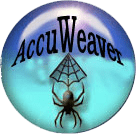Changing a Web Site to use hosted WordPress

I got an email from my friend Athens who had just relaunched her web site at http://www.athenskconsulting.com/ but was now having problems with email.
The first thing I did was to run over to the MX Toolbox site to see what was going on with her servers. A quick look and saw that her mail servers were pointing to mail.athenskconsulting.com, which resolved back to her WordPress blog.
Before she pointed everything to her WordPress site, everything had been working. Unfortunately, the directions at http://en.support.wordpress.com/domains/map-existing-domain/ had given her some unfortunate information, that really weren’t accurate for what she was trying to do.
Her DNS and email were previously hosted at GoDaddy (along with her old web site), and all she was really trying to do was to get her company URL to point at the blog site that she’d set up on WordPress. The instructions I mentioned before give a way to accomplish that, by repointing the domain DNS servers to be the ones that WordPress provides.
The unfortunate thing about that approach is that in order for this transition to happen smoothly, you have to transfer all of your DNS records into the WordPress settings so that things like your mail server will continue to work (following the instructions at http://en.support.wordpress.com/domains/custom-dns/
Now this might be OK if you are a geek and know what MX and CName records should look like, but typing in a DNS file in the format that WordPress expects it is much more difficult than using the GoDaddy DNS control panel (which helps prevent you from making mistakes).
I got on the phone with her, and the first thing I had her do was to switch her DNS servers back to GoDaddy. This is done by going to the Domain Manager page in GoDaddy and looking for the section that says “Name Servers”.

Clicking on the link that says “Set Nameservers” brings up a dialog that allows you to set the DNS (which had been set to the WordPress servers per the instructions mentioned previously):

This of course fixed the mail problem (along with other URL’s), but broke her web site again (which I expected it would).
We then clicked the “Launch” link on the same Domain Manager page by looking for the section that says “DNS Manager”:

This brings up the actual DNS zone editor that I talked about previously. Now the first thing you should do is to back up the zone records by using the import/export button on the DNS manager:

This gives you the basic information that you might have needed if were you going to follow the instructions on the WordPress site. It creates a text version of the information of the DNS Zone records in a standard format.
But unless you really need to move off GoDaddy for some reason, you don’t want to do that. Instead, you just need to set up a wildcard CNAME record for the WordPress blog, and make sure to remove any old A records that might be pointing to the wrong place.
So for Athens, we needed to delete all of her “A” records (since she no longer has a physical server), and add a CName that looked like:

And once DNS propogated, she was up and running again at http://www.athenskconsulting.com/
A quick trip back to the MX Toolbox site to check and her mail servers are now pointing back to GoDaddy again:

Clicking the link that says “ns lookup” shows that the domain is now using the GoDaddy DNS servers again:

The one other thing I do to make sure things are working is a DNS propogation check (http://www.whatsmydns.net/), which shows which servers will resolve the host and which don’t.
All the little green checkmarks mean everything is happy all around the world, and now everybody is resolving her site properly.
So in summary: if somebody tells you to change your DNS servers, think first and see if an alias will work better …
Related Articles




